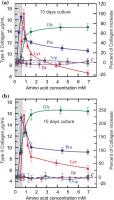Just wanted to post a quick link to another thread someone started on skin rejuvenation. One of the chemicals identified is a ROCK inhibitor, and a quick search shows statins have been used topically for improved wound healing.
https://www.longecit...on/#entry872303
So I think it's worth having a go at creating a topical statin solution. At the moment i only have atorvastatin, which is a little heavy for skin penetration, but is lipophillic, so should dissolve well in lots of skin creams.
So I made a statin skin cream. I used Atopalm for the base as it has chloresterol in it, which should counter the negative effects of statins making skin scaly. I also used Atopalm because it has been shown to reduce systemic inflammation when used on old skin, and is also proven to penetrate the stratum corneum.
See: https://onlinelibrar....1111/jdv.15540
Background: While increased levels of circulating inflammatory cytokines in chronologicallyaged humans have been linked to the development of aging-associated chronic disorders (e.g.,
cardiovascular disease, type II diabetes, osteoporosis and Alzheimer’s disease), approaches that
reduce circulating cytokines are not yet available. In chronologically aged mice, we recently
demonstrated that epidermal dysfunction largely accounts for age-associated elevations in
circulating cytokine levels, and that improving epidermal function reduced circulating cytokine
levels.
Objective: We performed a pilot study to determine whether improving epidermal
function reduces circulating proinflammatory cytokine levels in aged humans. Methods: Thirtythree aged humans were treated twice-daily for 30 days, with ≈3 ml of an emollient, previously
shown to improve epidermal function, while untreated, aged humans and a cohort of young
volunteers served as controls. Changes in epidermal function and levels of three key, age-related,
plasma cytokines (IL-1β, IL-6 and TNFα) were measured at baseline and after treatment, using
Luminex 200™ system. Results: We also found significantly higher baseline levels of IL-1β, IL6 and TNFα in aged vs. young humans (p<0.001), as previously reported. Topical applications of
the barrier repair emollient significantly enhanced epidermal permeability barrier function
(p<0.01) and stratum corneum hydration (p<0.05). In parallel, circulating levels of IL-1β and IL6 normalized, while TNFα levels declined substantially.
Conclusion: The results of this
preliminary study suggest that a larger clinical trial should be performed to confirm whether
improving epidermal function also can reduce circulating proinflammatory cytokine levels in
aged humans, while also possibly attenuating the downstream development of chronic
inflammatory disorders in the aged humans.
It's total guesswork but I've mixed in 100mg of simvastatin and 60mg of telmisartan with 40ml of Atopalm, which I'm applying to the face only in the morning. Simvastatin and telmisartan dissolved very well in the Atopalm. It's hard to say exactly how much I'm using a day but I'd estimate I'll use up the skin cream in 2 months, which means my skin is getting about 1.7mg of statins a day (maybe too much?).
I've been using it for a week. No side effects to report. Skin appearance is noticeably improved; the Atopalm seems to remain in the skin all day markedly improving moisture content. At this point it is impossible to attribute any effects to my additional ingredients.
My future plan is to also incorporate azithromycin into the skin cream, as a way of destroying senescent skin cells and making room for any progenitors the statin+sartan combination have created. Unfortunately azithromycin is a heavy molecule, so skin penetration may be limited.

























































